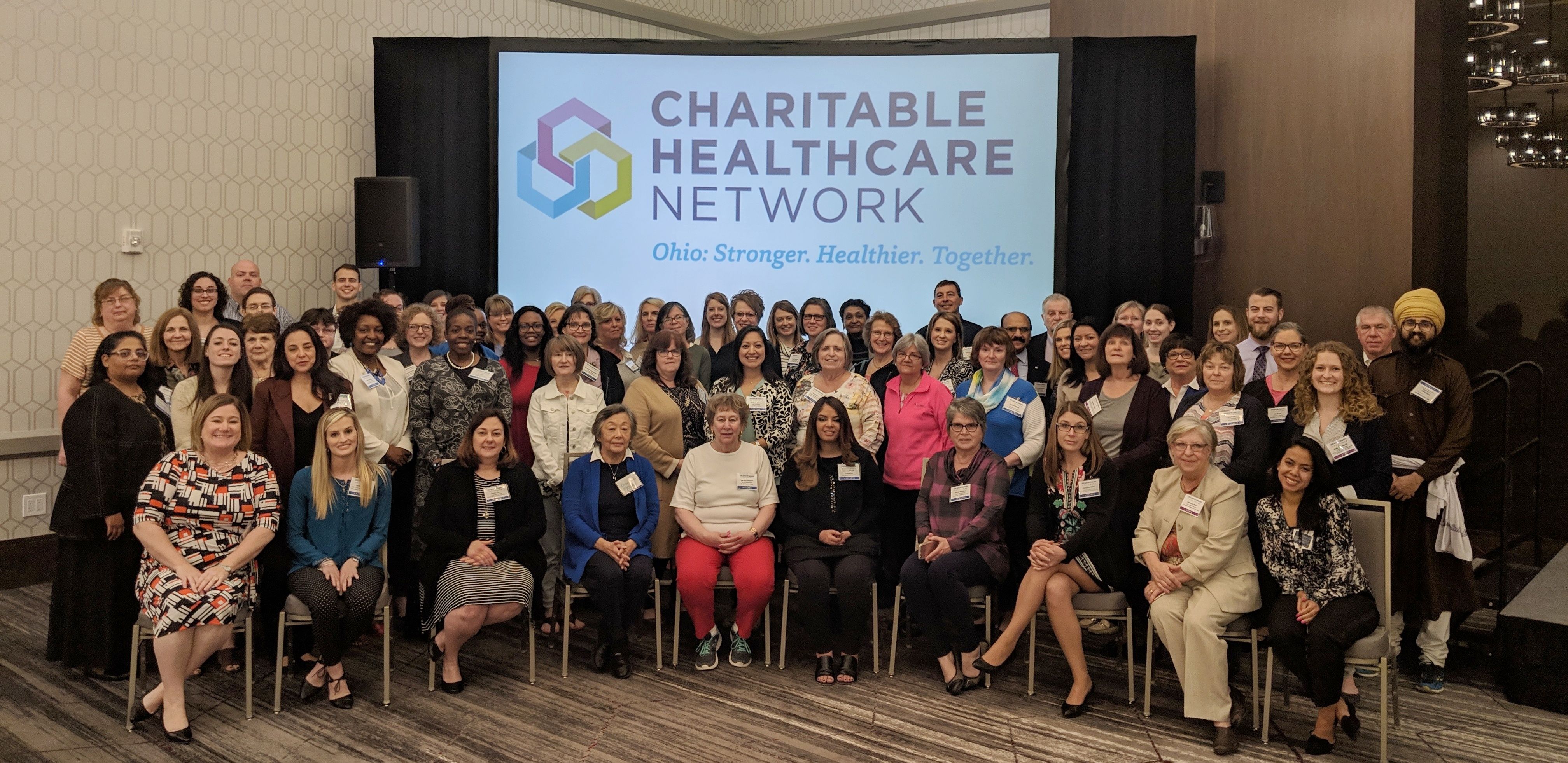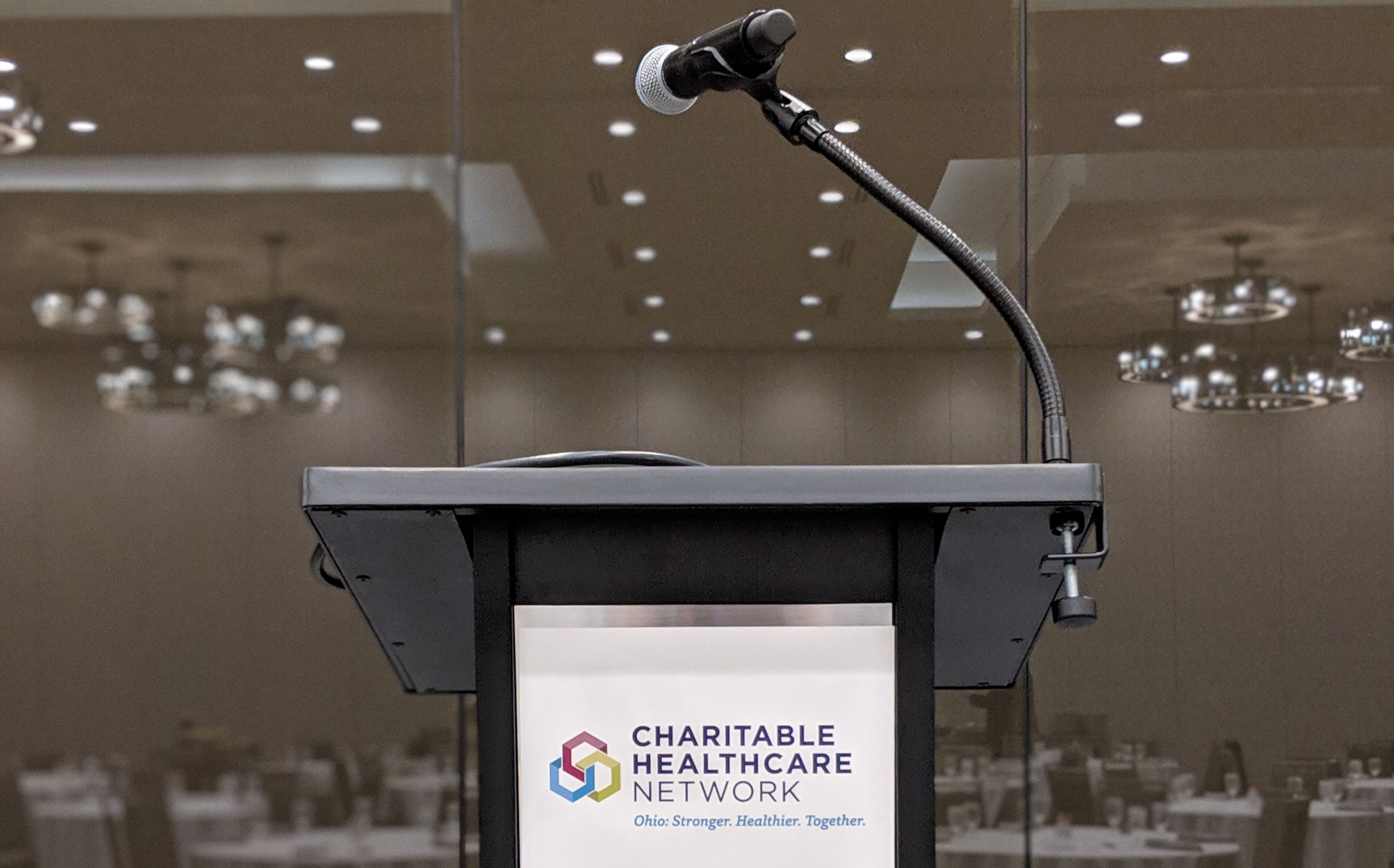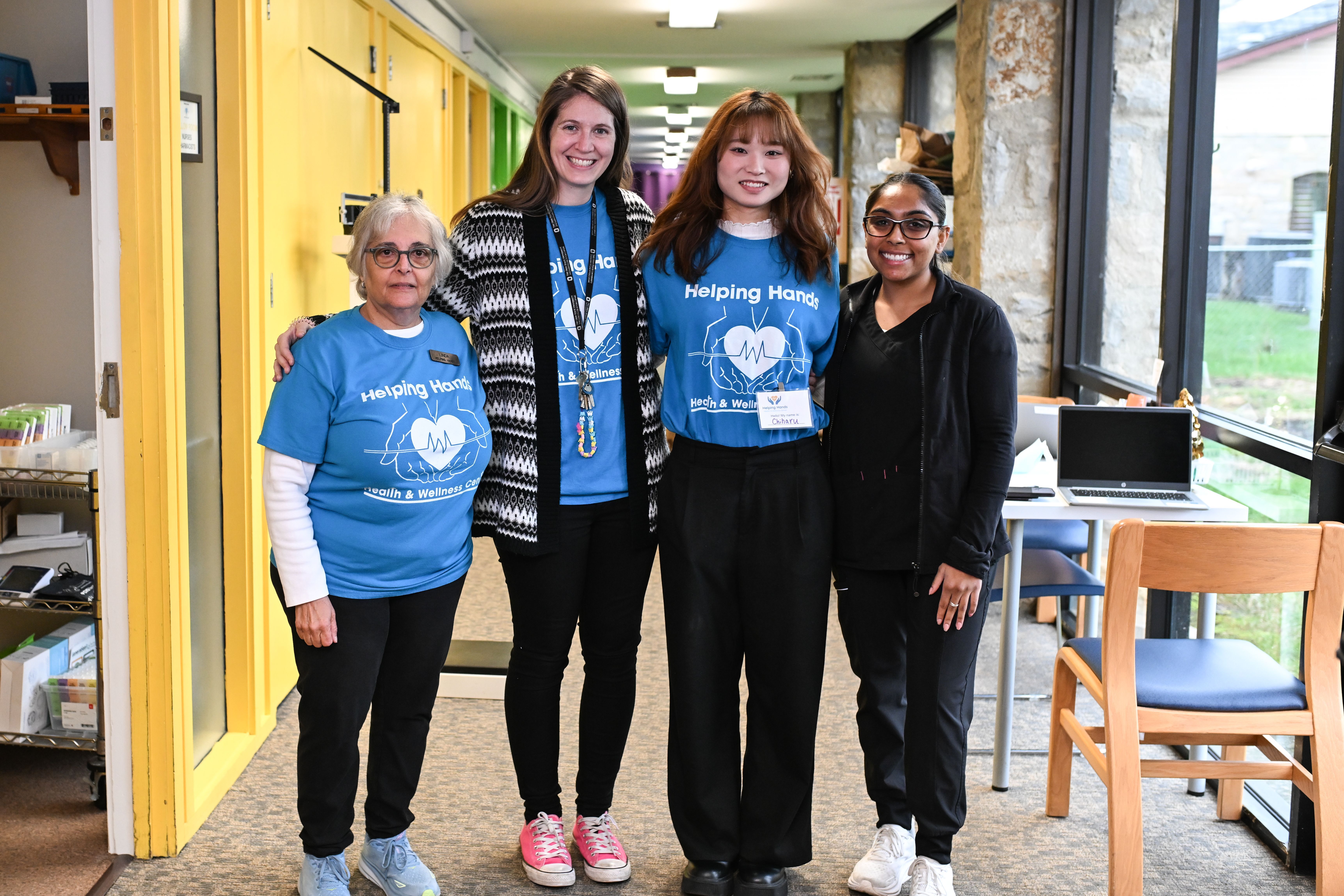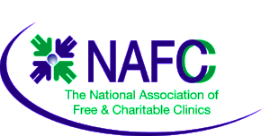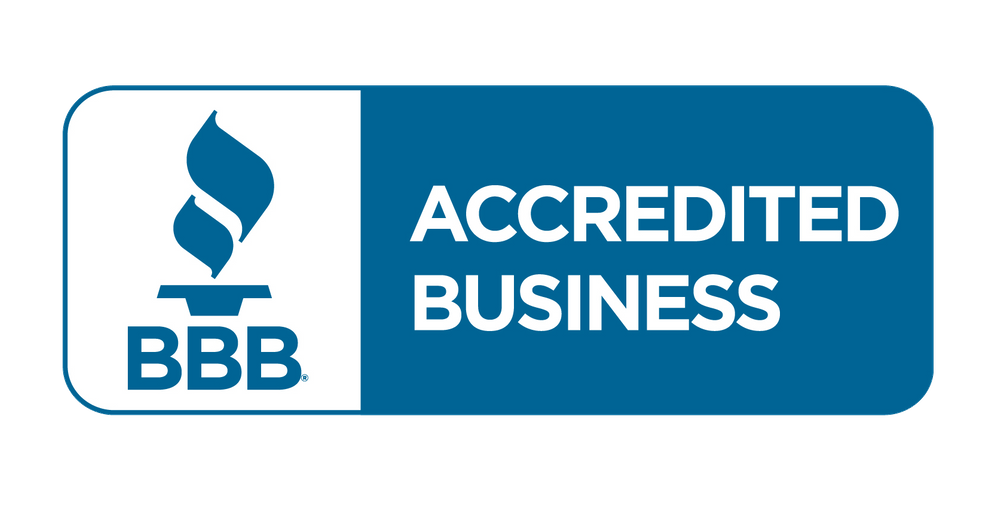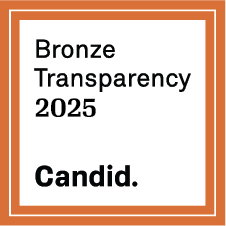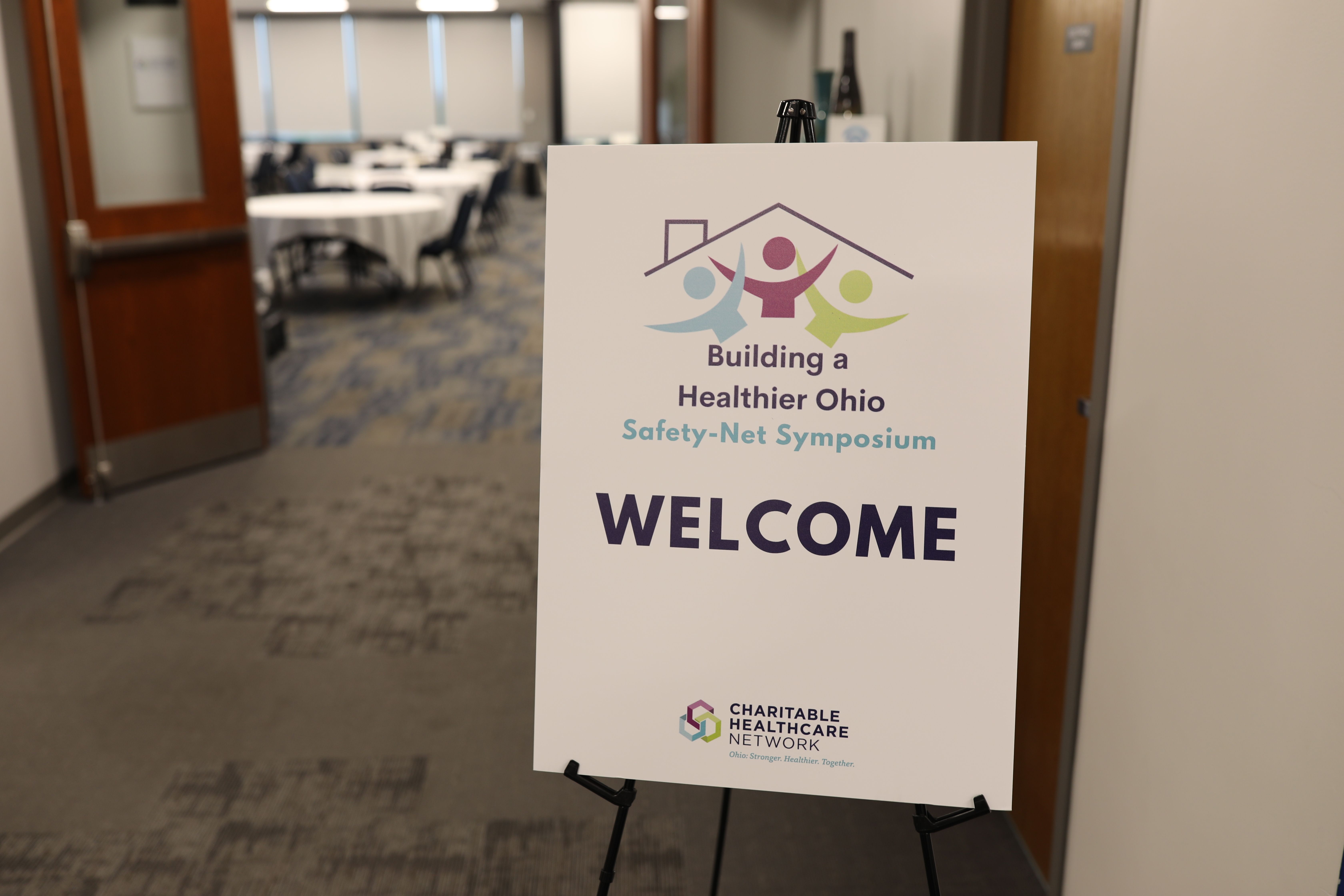
On May 1, CHN welcomed more than 150 clinic leaders, healthcare providers, volunteers and community
partners to the Quest Conference Center in Columbus for our 2025 Safety-Net Symposium.
This annual gathering offers space to step back from day-to-day challenges and reconnect with our shared mission: delivering high-quality, compassionate care to those with the least access. This year’s theme centered on the strength of community-based care and how our network can adapt, innovate and collaborate to meet growing healthcare gaps across Ohio.
The day featured keynote perspectives on leadership and innovation, followed by breakout sessions focused on operations, equity and collaboration.
Morning Keynotes: Advocacy and Innovation in Focus
The morning kicked off with two keynote sessions that offered distinct, but equally vital, perspectives on leadership in a rapidly changing healthcare landscape.
McKenzie Davis of The Success Group opened with a behind-the-scenes look at Ohio’s healthcare policy environment. Drawing on his background in law, government affairs, and nonprofit advocacy, McKenzie outlined practical ways clinics can elevate their voices, whether by engaging legislators directly or translating patient experiences into policy impact. His core message: the most powerful advocacy begins with those delivering care on the ground.
Next, Dan Farkas, strategic communication professor at Ohio University, turned the focus to artificial intelligence. With clarity and humor, Dan demystified AI for non-technical audiences, offering examples of how automation and chat-based tools could support, not replace, clinic operations. His talk sparked ongoing conversations throughout the day around innovation, communication and future readiness
Breakout Sessions: Strengthening Clinic Operations
Following the morning keynotes, attendees joined the first round of breakout sessions, diving into core operational topics affecting clinics statewide:
- Avoiding Trouble: Charitable Board Governance Strategies
Beth Short, Ohio Attorney General’s Office
This session, focused on fiduciary responsibilities, board leadership and compliance, equipped clinic leaders with tools to strengthen governance and avoid common pitfalls. - Transforming Care: Bridging the Gap Between Primary Care and Mental Health Services
Mark Yoder & Jessica Franklin, Viola Startzman Clinic
Speakers explored how integrated behavioral health models can lead to better outcomes, reduced stigma and improved access, particularly in underserved communities. - Med Rooms: Regulatory Standards for On-Site Medications in Free Clinics
Rusty Curington, St. Vincent de Paul Charitable Pharmacy & Joshua Pearson, Health Partners Free Clinic
Attendees reviewed the Ohio Board of Pharmacy’s inspection guide and left with a hands-on checklist to assess their med room readiness or plan for implementation.
Midday Programming: Strategy, Storytelling and Statewide Impact
Attendees reconvened over lunch for CHN’s Annual Meeting, which included updates on our organizational milestones, evolving legislative priorities and upcoming opportunities for clinic engagement in 2025.
Afterward, Geben Communication hosted a marketing and communications session that shared tools and tactics for using earned media, social platforms and patient stories to increase visibility and build support. The message echoed a key theme of the day: that storytelling, when paired with data, can powerfully mobilize change at the local and state levels.
Afternoon Breakouts: Equity, Volunteers & Real-World Solutions
The afternoon breakout block built on earlier conversations, digging deeper into volunteer leadership, equity frameworks and mobile care models:
- Navigating Change: Building Sustainable Volunteer Systems & Leadership Resilience
Gina Watts, Nikki Mills & Sammy Tamminga, Vineyard Free Health Clinics
This session addressed how to recruit, engage and retain volunteers while building systems that protect clinic leaders from burnout during growth and transition. - Elevating Quality to Achieve Equity
Cat Hulburt, Americares
Participants explored how the Roadmap to Health Equity framework can identify disparities in care, track progress over time, and communicate outcomes to funders and partners. - Modern Day MASH Units: Street Medicine for Unsheltered Persons
Dr. Mary Meyers, Duquesne University
Dr. Meyers highlighted how mobile and street-based care models are expanding access for Ohioans experiencing homelessness while reducing strain on emergency services and hospital systems.
Later that afternoon, attendees returned for one last set of “hot topic” breakout sessions - informal, peer-driven spaces to talk through persistent challenges.
Hot Topics & Regional Reflections
In the final breakout sessions of the day, attendees gathered in peer-driven “hot topic” groups to exchange ideas, troubleshoot persistent challenges, and identify creative solutions. Conversations ranged from ethical applications of AI, led by Dr. Syed Shoaib Shah of Salaam Clinic, to realistic fundraising tactics for overextended teams.
The day concluded with regional roundtables, where attendees shared what they learned and how they plan to take it back to their clinics. These reflections captured the true spirit of the Symposium: collaborative, practical and focused on continuous improvement.
Honoring Excellence: The Free Clinic Awards
As part of Free Clinic Appreciation Month, CHN hosted its annual Free Clinic Awards Ceremony the evening before the Symposium. The ceremony recognized individuals and organizations whose service exemplifies the heart of our work.
- Volunteer of the Year: Donna Kramer, MedWish Medworks
- Nurse of the Year: Courtney Gravens, CNP, Lake County Free Clinic
- Dentist of the Year: Daniel Stowe, DDS, Stowe Mission
- Physician of the Year: Kent Doherty, DO, Grace Clinics
- Pharmacist of the Year: Melanie Loftus, PharmD, R.Ph, Hope Clinic of Ross County
- Clinic Staff of the Year: Lois Wiggin, Health Partners Free Clinic
- Community Partner of the Year: Cardinal Health Foundation
- Clinic of the Year: OU Heritage Community Clinic
Each of these recipients exemplifies the values that define our network: service, resilience, and a commitment to accessible, high-quality care.
Thank You
To every speaker, awardee, attendee, and partner, THANK YOU. The 2025 Safety-Net Symposium was a success because of your ideas, your collaboration and your unwavering commitment to this work. We look forward to continuing these conversations and building on this momentum throughout the year. See you in 2026.

